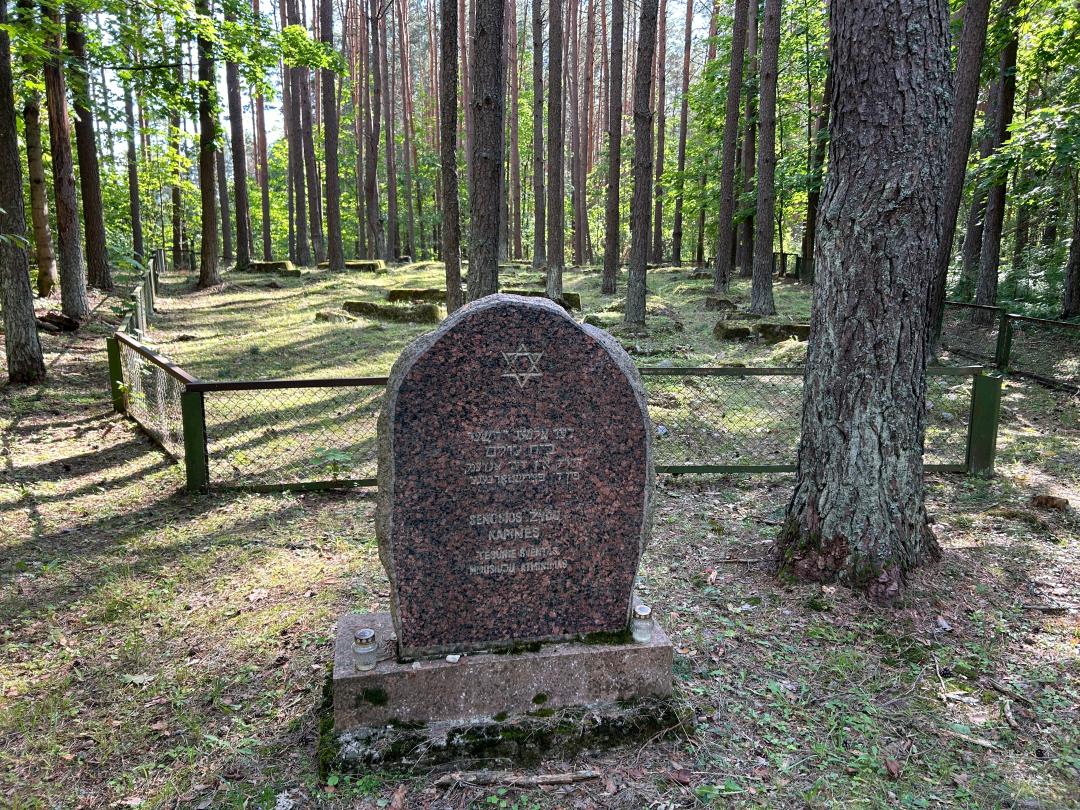Nestled in the serene woods of Lithuania lies the secluded Jewish cemetery of Ignalina, a poignant reminder of a once-thriving Jewish community that flourished before the ravages of World War II. This historical site offers a glimpse into the vibrant life of Ignalina’s Jewish residents and stands as a testament to their enduring legacy.
The history of Ignalina’s Jewish community began in the 1860s, following the construction of a railway line from St. Petersburg to Warsaw via Vilnius. This development transformed Ignalina into a key railway station, attracting numerous Jewish families to settle in the lake-filled region. By 1903, the Jewish population had grown to approximately 200 individuals, and by 1923, Jews constituted a significant 76% of Ignalina’s population, with 593 out of the 773 residents.
The Jewish community in Ignalina was a vibrant and industrious one. Many residents made their living through shopkeeping, crafting, and various trades. Nearly half of the community worked in stores and small businesses, while others were artisans. Additionally, some were engaged in the fish and lumber industries, and others dealt in fruits and berries, which were exported to major cities like Vilnius, Warsaw, Lodz, and Katowice.
Education and cultural life thrived in Ignalina. Jewish children attended chadarim, and in 1910, a Jewish Folkshul was established, later officially joining TSYSHO in 1922. By 1925, 52 children were enrolled in this Jewish school. The community was also enriched by the presence of Zionist movements, such as “Hechalutz” and “Shomer Ha Tzair,” which added to the town’s social vibrancy. Ignalina’s natural beauty made it a popular retreat for literary figures like Avrom Sutzkever and Shmerke Kacherginsky, who would stay at the Jewish boarding house near the first lake, bringing cultural vitality to the area.
Tragically, the vibrant Jewish community of Ignalina was decimated during the Holocaust. In October 1941, nearly all of Ignalina’s Jewish residents were murdered at the Poligon near Svencioneliai, alongside Jews from the surrounding areas. The massacre claimed around 8,000 lives, marking a sorrowful end to a flourishing community.
Today, the Ignalina Jewish cemetery, established in the 19th century, serves as a solemn monument to this lost community. Approximately 120 tombstones remain in the central part of the cemetery, enclosed by a metal mesh fence. In 1994, the cemetery was registered in the Cultural Property Register of the Republic of Lithuania. A memorial stone, inscribed in both Yiddish and Lithuanian, commemorates the departed with the words: “The old Jewish cemetery. May their memory be eternal.”
